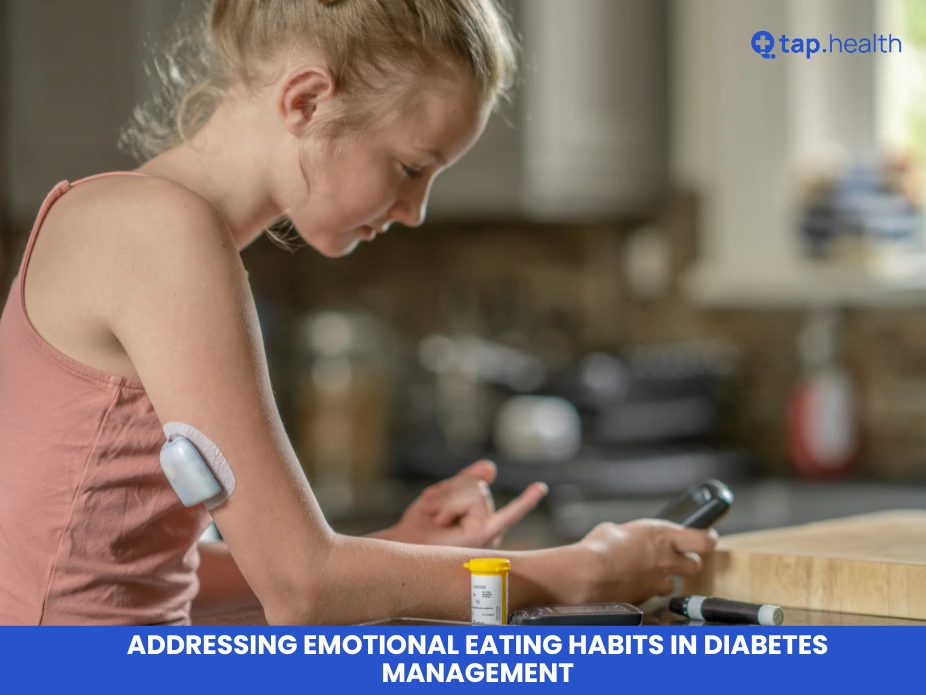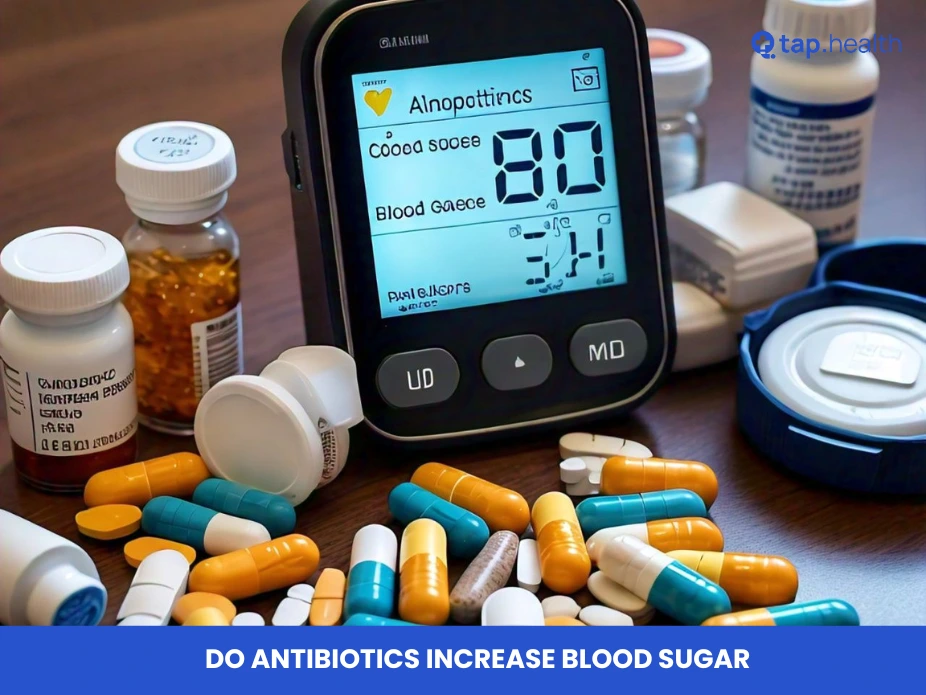Managing diabetes effectively goes beyond monitoring blood sugar levels and adhering to a strict diet. Emotional eating, a common challenge for many individuals, can significantly impact diabetes management. Emotional eating refers to the tendency to consume food in response to feelings rather than hunger, often leading to poor dietary choices and blood sugar spikes. This comprehensive guide explores strategies to address emotional eating habits in diabetes management, supported by real-life scenarios, expert insights, and evidence-based recommendations.
Understanding Emotional Eating
Emotional eating is the practice of using food to cope with emotions such as stress, sadness, boredom, or anxiety. Unlike physical hunger, which signals the body’s need for energy, emotional hunger is driven by psychological needs. For individuals with diabetes, emotional eating can complicate blood sugar control, leading to fluctuations that increase the risk of complications.
Key Factors Contributing to Emotional Eating
- Stress: High levels of stress can trigger the release of cortisol, a hormone that increases appetite and cravings for high-sugar and high-fat foods.
- Emotional Triggers: Feelings of loneliness, sadness, or frustration can lead to seeking comfort in food.
- Habits and Conditioning: Past experiences and learned behaviors can associate certain emotions with eating.
- Social Influences: Social settings and peer pressure can influence eating behaviors, especially during emotional times.
- Mental Health Issues: Conditions such as depression and anxiety are closely linked to emotional eating.
The Impact of Emotional Eating on Diabetes Management
Emotional eating can have several adverse effects on diabetes management:
- Blood Sugar Fluctuations: Consuming high-carb and sugary foods leads to rapid spikes and crashes in blood sugar levels.
- Weight Gain: Emotional eating often involves overeating, contributing to weight gain and increased insulin resistance.
- Nutritional Imbalance: Poor food choices can result in inadequate intake of essential nutrients, exacerbating diabetes complications.
- Psychological Stress: Guilt and shame associated with emotional eating can create a vicious cycle, worsening emotional health and eating behaviors.
Real-Life Scenarios
Understanding emotional eating through real-life scenarios can provide practical insights into how it affects diabetes management and how to address it effectively.
Scenario 1: Stress at Work
Situation: Maria, a 45-year-old office manager with type 2 diabetes, experiences high stress due to tight deadlines and long working hours. After a particularly stressful day, she finds herself reaching for sugary snacks to cope.
Impact: The consumption of sugary snacks leads to a significant spike in Maria’s blood sugar levels, making it harder to manage her diabetes and contributing to weight gain.
Strategy to Address:
- Stress Management Techniques: Maria can incorporate stress-reduction practices such as deep breathing exercises, short walks, or mindfulness meditation during breaks.
- Healthy Snack Alternatives: Replace sugary snacks with healthier options like nuts, fruits, or yogurt to satisfy cravings without causing blood sugar spikes.
- Structured Eating Schedule: Maintaining a regular eating schedule can prevent impulsive eating triggered by stress.
Scenario 2: Emotional Turmoil
Situation: John, a 60-year-old with type 1 diabetes, recently lost a loved one. He finds solace in eating large portions of comfort foods like ice cream and chips.
Impact: John’s emotional eating leads to inconsistent blood sugar levels and an increased reliance on insulin, complicating his diabetes management.
Strategy to Address:
- Emotional Support: Seeking support from a counselor or joining a support group can help John process his grief without turning to food.
- Mindful Eating Practices: Practicing mindful eating can help John become more aware of his emotional triggers and make conscious food choices.
- Healthy Coping Mechanisms: Engaging in hobbies, exercise, or other enjoyable activities can provide alternative ways to cope with emotions.
Scenario 3: Social Situations
Situation: Lisa, a 35-year-old with type 2 diabetes, attends social gatherings where unhealthy foods are readily available. She often feels pressured to indulge in rich desserts and high-carb dishes to fit in.
Impact: Frequent indulgence in unhealthy foods leads to poor blood sugar control and weight gain, hindering Lisa’s diabetes management efforts.
Strategy to Address:
- Planning Ahead: Lisa can plan her meals and snacks before attending social events to avoid impulsive eating.
- Healthy Food Choices: Opting for healthier options available at gatherings or bringing her own nutritious dishes can help maintain blood sugar levels.
- Assertive Communication: Communicating her dietary needs to friends and family can reduce the pressure to overeat.
Expert Contributions
Insights from nutritionists, endocrinologists, and mental health professionals highlight the importance of addressing emotional eating in diabetes management.
Dr. Rebecca Adams, Registered Dietitian
“Emotional eating is a significant barrier to effective diabetes management. It’s essential to recognize the emotional triggers that lead to overeating and develop strategies to address them. Incorporating mindful eating practices and seeking emotional support can make a substantial difference.”
Dr. Michael Thompson, Endocrinologist
“Managing diabetes requires a holistic approach. Emotional well-being is just as important as diet and exercise. Patients should be encouraged to seek mental health support and develop healthy coping mechanisms to prevent emotional eating from disrupting their blood sugar control.”
Sarah Johnson, Clinical Psychologist
“Emotional eating often stems from underlying emotional issues. Therapy and counseling can help individuals understand the root causes of their eating behaviors and develop healthier ways to manage their emotions without relying on food.”
Recommendations Grounded in Proven Research and Facts
Scientific studies provide evidence-based strategies to address emotional eating in diabetes management. Here are key recommendations supported by research:
1. Practice Mindful Eating
Research Insight: Mindful eating practices, such as paying full attention to the eating experience and recognizing hunger and fullness cues, have been shown to reduce emotional eating and improve blood sugar control.
Recommendation: Incorporate mindful eating techniques by eating slowly, savoring each bite, and eliminating distractions during meals. This approach helps in making conscious food choices and prevents overeating.
2. Develop Healthy Coping Mechanisms
Research Insight: Engaging in physical activities, hobbies, or relaxation techniques can reduce stress and emotional distress, thereby decreasing the tendency to engage in emotional eating.
Recommendation: Identify and engage in activities that bring joy and relaxation, such as yoga, painting, reading, or walking. These activities can serve as alternative ways to cope with emotions.
3. Seek Professional Support
Research Insight: Therapy and counseling, particularly cognitive-behavioral therapy (CBT), have been effective in addressing emotional eating by helping individuals understand and change their eating behaviors.
Recommendation: Consult with a mental health professional to explore underlying emotional issues and develop strategies to manage emotional eating. Support groups can also provide a sense of community and accountability.
4. Maintain a Balanced Diet
Research Insight: A well-balanced diet with adequate protein, fiber, and healthy fats can promote satiety and reduce cravings, minimizing the likelihood of emotional eating.
Recommendation: Plan meals that include a balance of macronutrients to keep blood sugar levels stable. Incorporate whole grains, lean proteins, fruits, vegetables, and healthy fats into daily meals.
5. Establish a Regular Eating Schedule
Research Insight: Skipping meals or having irregular eating patterns can increase the likelihood of emotional eating due to heightened hunger and reduced self-control.
Recommendation: Stick to a consistent eating schedule with regular meal and snack times to prevent extreme hunger and reduce the temptation to overeat in response to emotions.
6. Monitor and Reflect on Eating Patterns
Research Insight: Keeping a food diary can help individuals become more aware of their eating habits, identify emotional triggers, and track progress in managing emotional eating.
Recommendation: Maintain a journal to record what you eat, when you eat, and the emotions you experience before and after eating. This practice can highlight patterns and areas needing improvement.
7. Build a Support System
Research Insight: Social support from family, friends, or support groups can provide encouragement and accountability, making it easier to resist emotional eating urges.
Recommendation: Share your goals with trusted individuals who can offer support and understanding. Joining diabetes support groups can also connect you with others facing similar challenges.
8. Educate Yourself About Diabetes and Nutrition
Research Insight: Understanding the relationship between food, emotions, and blood sugar can empower individuals to make informed dietary choices and manage emotional eating effectively.
Recommendation: Educate yourself through reliable sources such as healthcare providers, nutritionists, and reputable online resources about diabetes management and healthy eating practices.
Factual and Reliable Information
Accurate information is essential for effectively addressing emotional eating in diabetes management. Here are some key facts:
Emotional Eating Facts
- Prevalence: Emotional eating is common among individuals with diabetes, as managing a chronic condition can lead to increased stress and emotional challenges.
- Impact on Health: Emotional eating can lead to poor blood sugar control, weight gain, and increased risk of diabetes complications.
- Psychological Connection: Emotional eating is often linked to underlying psychological issues such as depression, anxiety, and low self-esteem.
Diabetes Management Facts
- Blood Sugar Control: Maintaining stable blood sugar levels is crucial to prevent long-term complications like neuropathy, retinopathy, and cardiovascular diseases.
- Holistic Approach: Effective diabetes management includes diet, exercise, medication, and mental health support.
- Personalization: Diabetes management strategies should be tailored to individual needs, considering factors like lifestyle, preferences, and emotional well-being.
Nutrition and Diabetes Facts
- Balanced Diet: A balanced diet rich in fiber, lean proteins, and healthy fats supports blood sugar control and overall health.
- Carbohydrate Counting: Understanding and managing carbohydrate intake can help regulate blood sugar levels.
- Healthy Fats: Incorporating healthy fats from sources like nuts, seeds, and olive oil can promote satiety and stabilize blood sugar.
Mental Health and Diabetes Facts
- Connection: Mental health and diabetes are closely linked, with stress and emotional distress impacting blood sugar levels.
- Support Importance: Access to mental health support can improve diabetes management and overall quality of life.
- Therapeutic Benefits: Therapies like CBT can effectively address emotional eating and improve mental well-being.
Practical Tips for Addressing Emotional Eating in Diabetes Management
Implementing practical strategies can help manage emotional eating and improve diabetes outcomes. Here are actionable tips:
1. Identify Emotional Triggers
Action: Reflect on situations, feelings, or events that prompt emotional eating. Common triggers include stress, boredom, sadness, and anxiety.
Tip: Use a journal to document instances of emotional eating, noting the emotions and circumstances surrounding each episode.
2. Develop Healthy Eating Habits
Action: Establish regular meal and snack times to prevent extreme hunger and reduce the temptation to overeat.
Tip: Plan and prepare meals in advance, ensuring they are balanced and satisfying to minimize cravings.
3. Practice Mindful Eating
Action: Focus on the eating experience by paying attention to the taste, texture, and aroma of food, and recognizing hunger and fullness cues.
Tip: Eat slowly, chew thoroughly, and eliminate distractions like television or smartphones during meals.
4. Engage in Physical Activity
Action: Incorporate regular exercise into your routine to reduce stress, improve mood, and regulate blood sugar levels.
Tip: Find physical activities you enjoy, such as walking, swimming, yoga, or dancing, and schedule them into your weekly plan.
5. Seek Professional Help
Action: Consult with healthcare professionals, including dietitians and mental health counselors, to develop personalized strategies for managing emotional eating.
Tip: Consider joining support groups or therapy sessions focused on emotional eating and diabetes management.
6. Build a Support Network
Action: Surround yourself with supportive friends, family members, or peers who understand your challenges and can offer encouragement.
Tip: Share your goals and progress with trusted individuals who can provide accountability and motivation.
7. Use Stress-Reduction Techniques
Action: Incorporate stress management practices such as meditation, deep breathing, or progressive muscle relaxation into your daily routine.
Tip: Dedicate a few minutes each day to practice relaxation techniques that help calm your mind and reduce emotional triggers.
8. Plan for Cravings
Action: Develop a plan for handling cravings that doesn’t involve food, such as taking a walk, calling a friend, or engaging in a hobby.
Tip: Keep a list of non-food activities that you enjoy and can turn to when cravings arise.
9. Monitor Blood Sugar Levels
Action: Regularly check your blood sugar levels to understand how emotional eating affects your diabetes management.
Tip: Keep a log of your blood sugar readings along with notes on your emotional state and eating habits to identify patterns.
10. Educate Yourself
Action: Learn about the relationship between emotions, eating behaviors, and diabetes to make informed decisions.
Tip: Read books, attend workshops, or follow reputable online resources focused on emotional eating and diabetes management.
Sample Plan: Managing Emotional Eating in Diabetes
Creating a structured plan can help implement strategies to address emotional eating effectively. Here’s an example of a daily plan:
Morning
- Breakfast: Whole-grain oatmeal topped with fresh berries and a handful of almonds.
- Mindful Practice: Take 10 minutes to meditate or practice deep breathing before eating.
- Action: Reflect on how you feel and set a positive intention for the day.
Mid-Morning
- Snack: Greek yogurt with a sprinkle of chia seeds.
- Mindful Practice: Eat slowly, savoring each bite without distractions.
- Action: Check in with your emotions—note if you’re hungry or seeking comfort.
Afternoon
- Lunch: Grilled chicken salad with mixed greens, cherry tomatoes, cucumbers, and olive oil dressing.
- Mindful Practice: Focus on the flavors and textures of the food, and stop eating when you feel satisfied.
- Action: Take a short walk after lunch to boost mood and reduce stress.
Mid-Afternoon
- Snack: Sliced vegetables with hummus.
- Mindful Practice: Engage in a hobby or listen to music while enjoying your snack.
- Action: Identify any emotional triggers you’re experiencing and address them with non-food strategies.
Evening
- Dinner: Baked salmon with steamed broccoli and quinoa.
- Mindful Practice: Eat with family or friends, engaging in conversation without distractions.
- Action: Reflect on the day’s emotional challenges and how you managed them.
Night
- Evening Snack: A small handful of mixed nuts.
- Mindful Practice: Practice gratitude by listing three positive things about your day.
- Action: Prepare for a restful night by practicing relaxation techniques such as gentle stretching or reading.
Frequently Asked Questions (FAQ) On Addressing Emotional Eating Habits in Diabetes Management
1. What is emotional eating?
Emotional eating is the tendency to consume food in response to emotional triggers such as stress, sadness, boredom, or anxiety, rather than physical hunger. It often involves craving high-sugar, high-fat foods that provide temporary comfort.
2. How does emotional eating affect diabetes management?
Emotional eating can lead to poor dietary choices, overeating, and inconsistent blood sugar levels. This makes managing diabetes more challenging and increases the risk of complications like insulin resistance and cardiovascular diseases.
3. What are common emotional triggers for overeating in diabetes?
Common triggers include stress, loneliness, sadness, boredom, frustration, and anxiety. Social situations and environmental cues can also prompt emotional eating.
4. Can emotional eating lead to insulin resistance?
Yes, frequent emotional eating, especially of high-sugar and high-fat foods, can contribute to weight gain and increased insulin resistance, which are risk factors for type 2 diabetes.
5. How can I differentiate between physical hunger and emotional hunger?
Physical hunger develops gradually, is satisfied by any food, and is accompanied by signs like a growling stomach or low energy. Emotional hunger is sudden, specific to certain comfort foods, and often follows emotional triggers.
6. What strategies can help reduce emotional eating?
Strategies include practicing mindful eating, developing healthy coping mechanisms, seeking professional support, maintaining a balanced diet, establishing a regular eating schedule, and building a strong support network.
7. Is it possible to enjoy food without emotional eating?
Yes, by practicing mindful eating and developing a healthy relationship with food, you can enjoy meals without using food as a coping mechanism for emotions.
8. How can I seek professional help for emotional eating?
Consult with a registered dietitian, psychologist, or counselor who specializes in eating behaviors and diabetes management. They can provide personalized strategies and support.
9. Can exercise help manage emotional eating?
Yes, regular physical activity can reduce stress, improve mood, and decrease the likelihood of using food as an emotional crutch.
10. Are there support groups for emotional eating in diabetes?
Yes, many communities and online platforms offer support groups for individuals managing emotional eating and diabetes. These groups provide a sense of community, shared experiences, and mutual support.
Conclusion
Emotional eating is a significant challenge in diabetes management, but with the right strategies and support, it can be effectively addressed. By understanding the emotional triggers, developing healthy coping mechanisms, and seeking professional guidance, individuals can overcome emotional eating habits and achieve better blood sugar control. Incorporating mindful eating practices, maintaining a balanced diet, and building a strong support network are essential steps towards managing both emotional health and diabetes. Embracing these approaches not only improves diabetes outcomes but also enhances overall well-being and quality of life.
References
- Harvard Health Publishing. (2022). Emotional Eating: What It Is and How to Manage It. https://www.health.harvard.edu/staying-healthy/emotional-eating-what-it-is-and-how-to-manage-it
- Mayo Clinic. (2023). Emotional Eating: How to Break the Cycle. https://www.mayoclinic.org/healthy-lifestyle/nutrition-and-healthy-eating/in-depth/emotional-eating/art-20043994
- National Institute of Diabetes and Digestive and Kidney Diseases (NIDDK). (2022). Diabetes Diet, Eating, & Physical Activity. https://www.niddk.nih.gov/health-information/diabetes/overview/diet-eating-physical-activity
- Centers for Disease Control and Prevention (CDC). (2023). Managing Diabetes and Mental Health.



